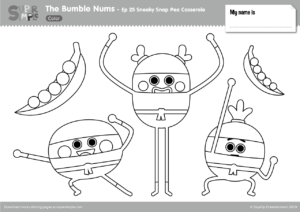
“Because of their work on roofs, ninja had to constantly have tempered fingers. These would be tough to do with a large body, wouldn’t they? Ninja performed espionage in attics and under floors, made deft movements, and practiced camouflage, among other things. However, if you think about the following, that mage might change somewhat. “When people imagine ninja, they often think of “running fast”, or “ability to fight”, or “powerful”, so there is a rather muscular, large image. This navy blue dye fulfilled a function of being a sort of viper pattern, much like the rattlesnake-like pattern in the color of jeans.

Jet-black would cause the form to stand out in the light of the moon, so a dark navy blue dying method was usually used. Black ninja clothing is often seen in movies, but there was actually no jet-black clothing. MOMOYAMA PERIOD (1573-1603) Ninja Clothing, Food and the 60 Kilogram Weight LimitĪccording to the Ninja Museum of Igaryu: “ Ninja clothing was made to be light and prevent the wearer from being noticed. MUROMACHI PERIOD (1338-1573): CULTURE AND CIVIL WARS MONGOL INVASION OF JAPAN: KUBLAI KHAN AND KAMIKAZEE WINDS KAMAKURA PERIOD (1185-1333) īUDDHISM AND CULTURE IN THE KAMAKURA PERIOD MINAMOTO YORITOMO, GEMPEI WAR AND THE TALE OF HEIKE SAMURAI WARFARE, ARMOR, WEAPONS, SEPPUKU AND TRAINING įAMOUS SAMURAI AND THE TALE OF 47 RONIN SAMURAI: THEIR HISTORY, AESTHETICS AND LIFESTYLE RELATED ARTICLES IN THIS WEBSITE: SAMURAI, MEDIEVAL JAPAN AND THE EDO PERIOD ĭAIMYO, SHOGUNS AND THE BAKUFU (SHOGUNATE) Good Websites and Sources: Iga-ryu Ninja Museum site Wikipedia article on Ninjas Wikipedia on Ninjas Ninjas: “Books: Secrets of the Ninja” by Hiromitsu Kuroi (DH Publishing, 2003) and “Ninja Attack! “ by Matt Alt and Hiroko Yoda. This clothing allowed one to blend into the night. What, then, was a ninja’s outfit? Actually, it was a mask used by farmers in the Iga region, and was worn when working at night. In traditional Ninja writings, there was a camouflage method known as Shichihoude, which was divided into the seven types of disguises: monk, priest, mountain monk, merchant, minstrel, and performer. When they traveled along roads, they changed their appearance from that of commoners and farmers to medicine peddlers or mountain monks, changing between clothing that suited the situation. When they went about their work, they used to camouflage, so as not to be revealed as ninja to those around them. Women ninjas were rare and didn't wear red costumes.Īccording to the Ninja Museum of Igaryu: “When not working, ninja lived the same lives as farmers. When they traveled they often posed as Buddhist priests or candy salesmen.

Rather they wore conservative blue outfits like those worn by peasants that allowed them to blend into the crowd. Their residences had hidden escape routes and movable floorboards where their weapons and swords were stashed.Ĭontrary to myth, ninja men did not dress in hooded black jumpsuits.

Their ability to disappear is attributed to their use of trapdoors in floors and secret pivotal doors in walls. Ninjas were skilled at scaling castle walls and using well tunnels to pop up in unlikely places. Before going on missions they avoided eating garlic and beans to reduce the chance of producing odors that might draw unwanted attention. They communicated with secret codes and used aliases instead of their real names. Ninjas were trained from an early age to walk and move quietly. Hokusai sketch of a ninja in a 19th century manga


 0 kommentar(er)
0 kommentar(er)
